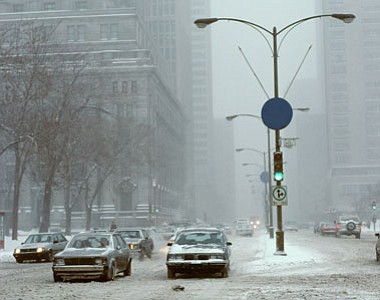BALTIMORE — Maryland is seeing bitter cold across the state, with wind chill and winter storm advisories and watches issues by the National Weather Service for many counties. While some areas of the state are not currently included in these advisories, the Maryland Department of Health is cautioning residents to guard against frostbite, hypothermia, and other related issues during these cold conditions.
The Department of Health monitors temperature conditions and incidences of cold-related illnesses and deaths. The department began issuing weekly reports November 22, 2017. The reports provide guidance and information about deaths and illness caused by extreme cold in the region. To see the reports, visit the Extreme Cold Resources page found here. The site also includes the department’s Extreme Cold Emergency Plan and fact sheets on cold weather health issues, carbon monoxide, driving tips for extreme cold weather and the warning signs of a heart attack.
“With the severe cold Maryland has experienced over the past week, it is important for residents to dress warmly and to have a cold weather emergency kit at home and in their vehicle,” said Public Health Services Deputy Secretary Dr. Howard Haft. “Knowing how to prepare can help keep Marylanders healthy and safe.”
Hypothermia occurs when the body temperature falls below 95ºF. In the 2016-2017 winter season, there were
34 cold-related deaths in Maryland. Frostbite is the freezing and subsequent destruction of body tissue that is likely to occur any time skin temperature gets much below 32ºF. The body parts most likely to freeze are toes, fingers, ears, cheeks, and the tip of the nose.
The Department of Health offers these safety tips:
•Cover your head. You lose as much as 50 percent of your body heat through your head. Also cover your mouth with a scarf to protect lungs from direct cold air, as well as your ears and lower part of your face.
•Wear several layers of lightweight, loose-fitting clothing. The air between the layers acts as insulation to keep you warmer.
•Wear mittens rather than fingered gloves. The close contact of fingers helps keep your hands warm.
•Wear warm leg coverings and heavy socks or two pairs of lightweight socks.
•Wear waterproof boots or sturdy shoes to keep your feet warm and dry.
•Be alert to such common winter hazards as carbon monoxide (CO) poisoning and injuries from heat sources. CO is produced by small gasoline engines, stoves, generators, lanterns and gas ranges or by the burning of charcoal and wood. This colorless, odorless gas can cause severe illness and death. Heating sources can also cause fires, electrical injuries and burns, if not properly installed, operated, and maintained.
•Review your family emergency communications plan and emergency supply kits for homes and vehicles. Each family member should know what to do and how to contact others in an emergency. The home emergency supply kit should include unexpired food items, medical supplies and batteries. Vehicles should contain such items as heavy blankets, water, nonperishable food, a flashlight and a snow shovel.
More information on emergency preparedness is available at https://preparedness.health.maryland.gov/Pages/Home.aspx.
